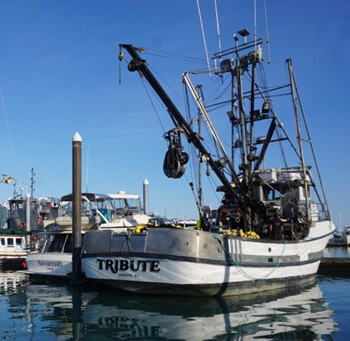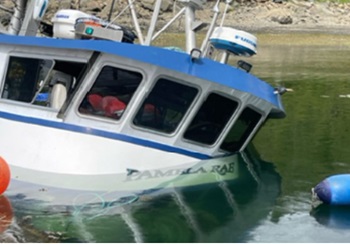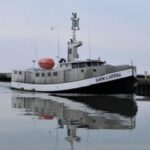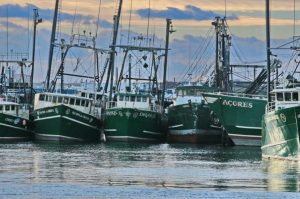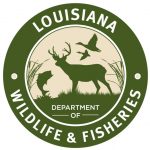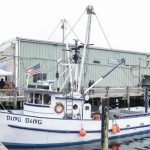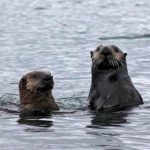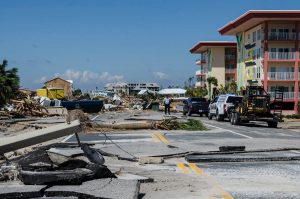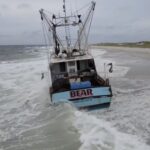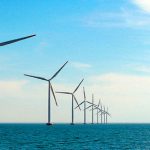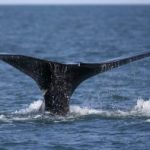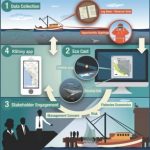Category Archives: North Pacific
Biden-Harris Administration Announces More Than $105 Million for West Coast and Alaska Salmon
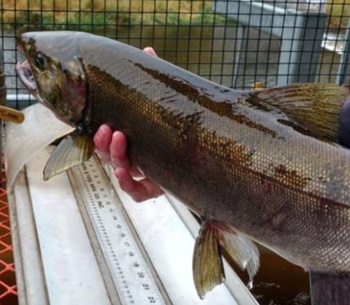 Today, the Department of Commerce and NOAA announced more than $105 million in recommended funding for 14 new and continuing salmon recovery projects and programs. Located along the West Coast and in Alaska, these state and tribal efforts will be funded through the Pacific Coastal Salmon Recovery Fund (PCSRF). The funds include Fiscal Year 2024 annual appropriations as well as $34.4 million under the Bipartisan Infrastructure Law and $7.5 million under the Inflation Reduction Act, and will aid programs and projects in Alaska, California, Idaho, Oregon and Washington that include habitat restoration, stock enhancement, sustainable fisheries and research and monitoring. “This $105 million investment, made possible thanks to the Biden-Harris Administration’s Investing in America agenda, will build on decades of salmon recovery work, while helping Pacific coast Tribes and Alaska Natives sustain their communities and cultural traditions in the face of climate change,” said U.S. Secretary of Commerce Gina Raimondo. “This is a result of the most ambitious climate agenda in history, and I am proud that nearly half of all funds in this announcement are being awarded to Tribal applicants.” more, >>CLICK TO READ<< 17:55
Today, the Department of Commerce and NOAA announced more than $105 million in recommended funding for 14 new and continuing salmon recovery projects and programs. Located along the West Coast and in Alaska, these state and tribal efforts will be funded through the Pacific Coastal Salmon Recovery Fund (PCSRF). The funds include Fiscal Year 2024 annual appropriations as well as $34.4 million under the Bipartisan Infrastructure Law and $7.5 million under the Inflation Reduction Act, and will aid programs and projects in Alaska, California, Idaho, Oregon and Washington that include habitat restoration, stock enhancement, sustainable fisheries and research and monitoring. “This $105 million investment, made possible thanks to the Biden-Harris Administration’s Investing in America agenda, will build on decades of salmon recovery work, while helping Pacific coast Tribes and Alaska Natives sustain their communities and cultural traditions in the face of climate change,” said U.S. Secretary of Commerce Gina Raimondo. “This is a result of the most ambitious climate agenda in history, and I am proud that nearly half of all funds in this announcement are being awarded to Tribal applicants.” more, >>CLICK TO READ<< 17:55
Copper River harvest edges slowly towards1.4M
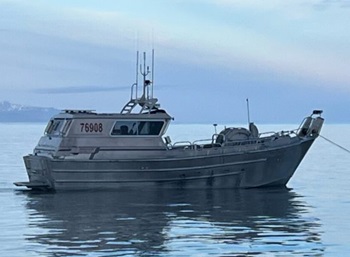 Harvests of Copper River District salmon edged up slightly to 1.4 million fish as of Tuesday, July 23, while for Prince William Sound overall the catch delivered to processors came to over 7 million fish, as the fishery slowed. Alaska Department of Fish and Game biologist Jeremy Botz in Cordova noted that fishing for coho salmon will pick up in mid-August. Meanwhile, Botz said, the sockeye harvest came in above forecast while the chum and likely Chinook catch would be below forecast. Consumers still hoping to purchase those prized Copper River reds likely won’t find them at their local seafood shops, but via the internet in a wide range of prices, some of which have not declined since the summer salmon season began. more, >>CLICK TO READ<< 11:40
Harvests of Copper River District salmon edged up slightly to 1.4 million fish as of Tuesday, July 23, while for Prince William Sound overall the catch delivered to processors came to over 7 million fish, as the fishery slowed. Alaska Department of Fish and Game biologist Jeremy Botz in Cordova noted that fishing for coho salmon will pick up in mid-August. Meanwhile, Botz said, the sockeye harvest came in above forecast while the chum and likely Chinook catch would be below forecast. Consumers still hoping to purchase those prized Copper River reds likely won’t find them at their local seafood shops, but via the internet in a wide range of prices, some of which have not declined since the summer salmon season began. more, >>CLICK TO READ<< 11:40
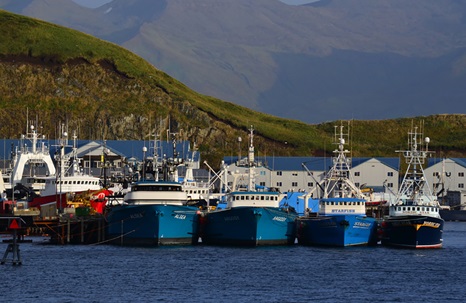
Biden administration rejects top Inslee choice for Alaska fish commission, reappoints trawl ally
The Biden administration has rejected a nominee for a key Alaska fisheries management post who could have tipped decisions toward the interests of tribes and conservation groups and away from the priorities of the large-boat, Seattle-based trawl industry. U.S. Commerce Secretary Gina Raimondo skipped over the top choice of Washington Democratic Gov. Jay Inslee, conservation advocate Becca Robbins Gisclair, and instead reappointed the last-ranked nominee on a slate of four candidates that Inslee offered: Anne Vanderhoeven, a trawl industry employee who has served on the panel for several years. Raimondo’s choice for the open North Pacific Fishery Management Council seat, which was confirmed Tuesday by Inslee’s natural resources advisor Ruth Musgrave, comes after what advocates describe as weeks of intense lobbying by supporters of both Gisclair and Vanderhoeven. more, >>CLICK TO READ<< 11:47
Illegal fishing shuts down Egegik district
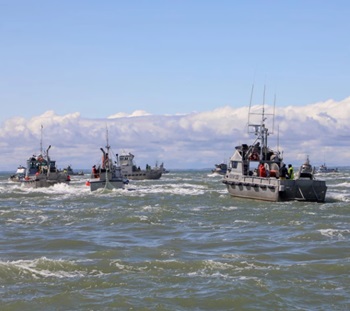 In Bristol Bay’s Egegik district, it’s not uncommon to see some boats illegally fishing over the line. But this year seemed particularly bad, according to the Alaska Department of Fish and Game. “We were receiving daily phone calls between Fish and Game and wildlife troopers, you know, multiple boats upwards of fifty at a time fishing outside of the district,” Tiernan said. That’s state biologist Aaron Tiernan. He says that during the peak of the season, extra Alaska State Troopers flood Bristol Bay from around the state. It’s a big effort. But as fishing winds down, the Alaska Department of Fish and Gamey start leaving to patrol other areas. “More and more reports come in. Because there’s less, there’s less enforcement going on overall. And we need to try to protect stocks that are going north and south or even into Egegik,” Tiernan said. So, in response, he decided to shut the fishery down. more, >>CLICK TO READ<< 14:39
In Bristol Bay’s Egegik district, it’s not uncommon to see some boats illegally fishing over the line. But this year seemed particularly bad, according to the Alaska Department of Fish and Game. “We were receiving daily phone calls between Fish and Game and wildlife troopers, you know, multiple boats upwards of fifty at a time fishing outside of the district,” Tiernan said. That’s state biologist Aaron Tiernan. He says that during the peak of the season, extra Alaska State Troopers flood Bristol Bay from around the state. It’s a big effort. But as fishing winds down, the Alaska Department of Fish and Gamey start leaving to patrol other areas. “More and more reports come in. Because there’s less, there’s less enforcement going on overall. And we need to try to protect stocks that are going north and south or even into Egegik,” Tiernan said. So, in response, he decided to shut the fishery down. more, >>CLICK TO READ<< 14:39
Unalaska, Aleutians East Borough oppose Rep. Peltola’s proposed trawling limitations
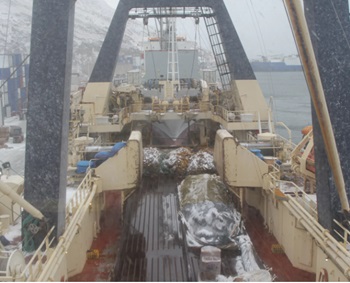 Communities in the Aleutians are pushing back against proposed legislation that would bring stricter regulations to the Bering Sea trawl fishery. The City of Unalaska and the Aleutians East Borough are among 53 organizations that signed onto a letter sent to U.S. Rep. Mary Peltola, urging her to withdraw H.R. 8507, a bill she sponsored in May. The proposed legislation aims to add new regulations to where trawling can take place across the United States, not only in Alaska. Trade organizations and some coastal communities whose economies rely on trawl fisheries have pushed back against the bill, asking the congresswoman to repeal it. “If enacted, H.R. 8507 would directly harm fishermen and coastal communities in Alaska and throughout our nation, along with countless other people who rely on a healthy domestic seafood sector for food, jobs, and their way of life,” the letter said. more, >>CLICK TO READ<< 13:28
Communities in the Aleutians are pushing back against proposed legislation that would bring stricter regulations to the Bering Sea trawl fishery. The City of Unalaska and the Aleutians East Borough are among 53 organizations that signed onto a letter sent to U.S. Rep. Mary Peltola, urging her to withdraw H.R. 8507, a bill she sponsored in May. The proposed legislation aims to add new regulations to where trawling can take place across the United States, not only in Alaska. Trade organizations and some coastal communities whose economies rely on trawl fisheries have pushed back against the bill, asking the congresswoman to repeal it. “If enacted, H.R. 8507 would directly harm fishermen and coastal communities in Alaska and throughout our nation, along with countless other people who rely on a healthy domestic seafood sector for food, jobs, and their way of life,” the letter said. more, >>CLICK TO READ<< 13:28
Kodiak crabber catches red king crab in Norton Sound, sparks public outrage in Nome
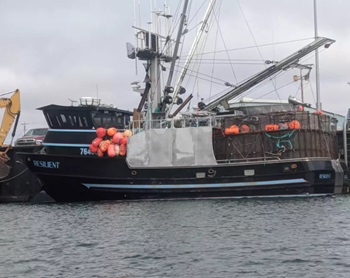 A limited amount of Norton Sound red king crab was for sale on the dock in Kodiak on July 19. This crab species is rarely available in this part of the state. And the Kodiak commercial fisherman who legally caught the king crab is facing some pushback. Raymond May was born and raised on Kodiak Island and has been fishing in Alaska for 40 years. He also holds the salmon fisher’s seat on the Alaska Bycatch Review Task Force, as appointed by Governor Mike Dunleavy. May operates his own vessel, called the Resilient, which is labeled as a tender packer. May’s boat was spotted docked in Nome’s small boat harbor on June 18 and immediately sparked criticism on social media. more, >>CLICK TO READ<< 10:30
A limited amount of Norton Sound red king crab was for sale on the dock in Kodiak on July 19. This crab species is rarely available in this part of the state. And the Kodiak commercial fisherman who legally caught the king crab is facing some pushback. Raymond May was born and raised on Kodiak Island and has been fishing in Alaska for 40 years. He also holds the salmon fisher’s seat on the Alaska Bycatch Review Task Force, as appointed by Governor Mike Dunleavy. May operates his own vessel, called the Resilient, which is labeled as a tender packer. May’s boat was spotted docked in Nome’s small boat harbor on June 18 and immediately sparked criticism on social media. more, >>CLICK TO READ<< 10:30
Norton Sound Crab Season Ends Early Amidst Concerns Over Non-Regional Fishing Vessels
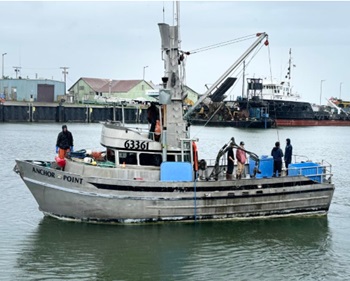 After only 28 days, the Norton Sound summer commercial Red King Crab season has come to a close. According to the Alaska Department of Fish and Game, this year’s season was just over half as long as the average run of 54 days from 1994 to 2023. For the 2024 season, Norton Sound was the only fishery in the country open for commercial Red King Crab harvesting. This is an attractive opportunity for fishing crews as the statewide commercial quota for the reputed “deadliest catch” is solely concentrated in the waters of Norton Sound. A boat at the center of recent public scrutiny is the F/V Resilient, owned and operated by Raymond May of Kodiak. more, >>CLICK TO READ<< 10:24
After only 28 days, the Norton Sound summer commercial Red King Crab season has come to a close. According to the Alaska Department of Fish and Game, this year’s season was just over half as long as the average run of 54 days from 1994 to 2023. For the 2024 season, Norton Sound was the only fishery in the country open for commercial Red King Crab harvesting. This is an attractive opportunity for fishing crews as the statewide commercial quota for the reputed “deadliest catch” is solely concentrated in the waters of Norton Sound. A boat at the center of recent public scrutiny is the F/V Resilient, owned and operated by Raymond May of Kodiak. more, >>CLICK TO READ<< 10:24
Bristol Bay floating fish processor back at full capacity after fire
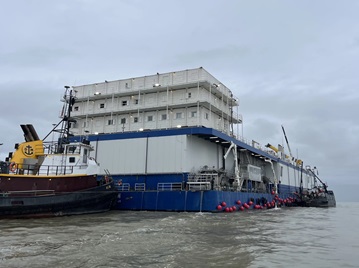 The Hannah, operated by startup Northline Seafoods, arrived in the region earlier this year. It uses super-cold spiral freezers to quickly freeze fish and then store them on board until the end of the season. But just before Bristol Bay’s salmon season hit its peak, one of those spiral freezers had an electrical fire. Because of the June 30 blaze, the Hannah has operated at reduced capacity for the last two weeks. On Wednesday, Northline announced that the freezer had been repaired. With that fix, the startup’s floating processing vessel is back to full capacity. “We definitely missed a few days of the peak, which we can’t get back. But we intend to continue to buy hopefully into the fall here,” said Northline CEO Ben Blakey. more, >>CLICK TO READ<< 10:17
The Hannah, operated by startup Northline Seafoods, arrived in the region earlier this year. It uses super-cold spiral freezers to quickly freeze fish and then store them on board until the end of the season. But just before Bristol Bay’s salmon season hit its peak, one of those spiral freezers had an electrical fire. Because of the June 30 blaze, the Hannah has operated at reduced capacity for the last two weeks. On Wednesday, Northline announced that the freezer had been repaired. With that fix, the startup’s floating processing vessel is back to full capacity. “We definitely missed a few days of the peak, which we can’t get back. But we intend to continue to buy hopefully into the fall here,” said Northline CEO Ben Blakey. more, >>CLICK TO READ<< 10:17
Task force report identifies research needs to better understand Alaska salmon problems
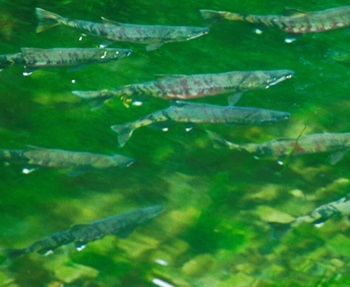 Fishery managers overseeing Alaska’s faltering salmon runs should be able to rely on a more comprehensive and holistic approach to science that considers all habitat, from the middle of the ocean to freshwater spawning streams far inland, according to a task force report on salmon research needs. The report was issued last week by the Alaska Salmon Research Task Force, a group established through a 2022 act of Congress to identify knowledge gaps and research needs. The task force comprises close to 20 members and includes scientists, fishers, Indigenous community representatives and agency managers. In addition to those members, the effort included a special 42-member working group focused on salmon problems in the Yukon and Kuskokwim River drainages. The report follows a year’s worth of meetings and consultations. more, >>CLICK TO READ<< 17:34
Fishery managers overseeing Alaska’s faltering salmon runs should be able to rely on a more comprehensive and holistic approach to science that considers all habitat, from the middle of the ocean to freshwater spawning streams far inland, according to a task force report on salmon research needs. The report was issued last week by the Alaska Salmon Research Task Force, a group established through a 2022 act of Congress to identify knowledge gaps and research needs. The task force comprises close to 20 members and includes scientists, fishers, Indigenous community representatives and agency managers. In addition to those members, the effort included a special 42-member working group focused on salmon problems in the Yukon and Kuskokwim River drainages. The report follows a year’s worth of meetings and consultations. more, >>CLICK TO READ<< 17:34
U.S. Gulf of Mexico Shrimp Fishery Achieves RFM Certification
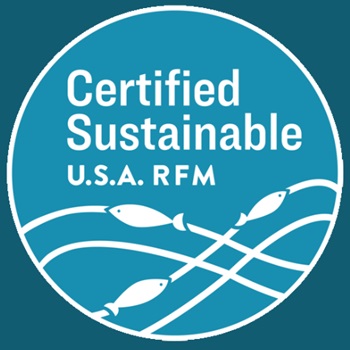 The Certified Seafood Collaborative (CSC) is pleased to announce that the U.S. Gulf of Mexico shrimp fishery (white, brown, and pink shrimp) for all five Gulf states and federal waters has achieved Responsible Fisheries Management (RFM) Certification. This is the first shrimp fishery certified to the RFM Standard. RFM Certification requires fisheries meet RFM Standard criteria which evaluate fisheries in four key areas: A) the fisheries management system; B) science and stock assessment activities, and the precautionary approach; C) management measures, implementation, monitoring, and control; and D) serious impacts of the fishery on the ecosystem. Third-party certification body Global Trust awarded the certification after a thorough evaluation of the Gulf of Mexico Shrimp fishery as reported in the Final Assessment Report. more, >>CLICK TO READ<< 06:16
The Certified Seafood Collaborative (CSC) is pleased to announce that the U.S. Gulf of Mexico shrimp fishery (white, brown, and pink shrimp) for all five Gulf states and federal waters has achieved Responsible Fisheries Management (RFM) Certification. This is the first shrimp fishery certified to the RFM Standard. RFM Certification requires fisheries meet RFM Standard criteria which evaluate fisheries in four key areas: A) the fisheries management system; B) science and stock assessment activities, and the precautionary approach; C) management measures, implementation, monitoring, and control; and D) serious impacts of the fishery on the ecosystem. Third-party certification body Global Trust awarded the certification after a thorough evaluation of the Gulf of Mexico Shrimp fishery as reported in the Final Assessment Report. more, >>CLICK TO READ<< 06:16
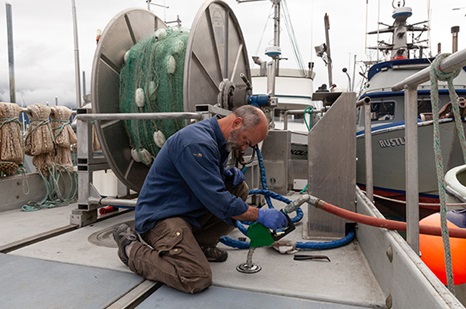
Salmon disaster relief applications for permit-holders due August 24
Federal disaster aid is on the way for some commercial fishing permit-holders in Haines and throughout the state, though many may be too wrapped up in the current season to apply for it right away. Applications for crew and subsistence users are currently available online. Unique applications for permit-holders and processors from the Pacific States Marine Fisheries Commission were mailed out on June 26 and are due August 24. Once completed the application can be mailed back to the commission or uploaded online. There’s also aid for vessel crew, and those applications are not due until September 28, but they may be harder to find. They’ll also need an affidavit from the permit holder or vessel owner they worked with to apply. more, >>CLICK TO READ<< 07:10
‘Deadliest Catch’ Survived Its Biggest Battle Yet
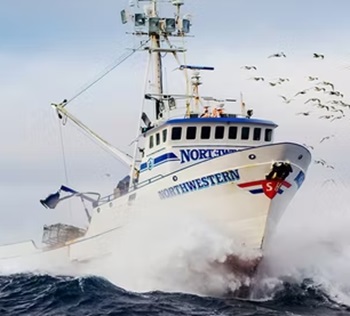 At the start of Season 19, Deadliest Catch was enduring an obstacle that could have sunk the entire program. When the Alaskan Department of Fish and Game canceled the entire season due to the population of winter snow and red king crab shrinking, production decided the show must go on. Deadliest Catch Executive Producer Aaron Starr-Paul told Deadline, “Fans can anticipate another great season of Deadliest Catch where we will document our captains as they participate in other sustainable Bering Sea crab and pot fisheries, such as Golden King Crab, Bairdi, and Cod.” For many fans, the type of catch holds little bearing. For the men and women braving the conditions, it certainly does; but what a difference a year can make! Season 20 of Deadliest Catch kicked off with the Red King Crab fishery reopening, leading to a derby-style race between the captains. Photos, more, >>CLICK TO READ<< 12:09
At the start of Season 19, Deadliest Catch was enduring an obstacle that could have sunk the entire program. When the Alaskan Department of Fish and Game canceled the entire season due to the population of winter snow and red king crab shrinking, production decided the show must go on. Deadliest Catch Executive Producer Aaron Starr-Paul told Deadline, “Fans can anticipate another great season of Deadliest Catch where we will document our captains as they participate in other sustainable Bering Sea crab and pot fisheries, such as Golden King Crab, Bairdi, and Cod.” For many fans, the type of catch holds little bearing. For the men and women braving the conditions, it certainly does; but what a difference a year can make! Season 20 of Deadliest Catch kicked off with the Red King Crab fishery reopening, leading to a derby-style race between the captains. Photos, more, >>CLICK TO READ<< 12:09
Local fishermen report mixed results in commercial season so far
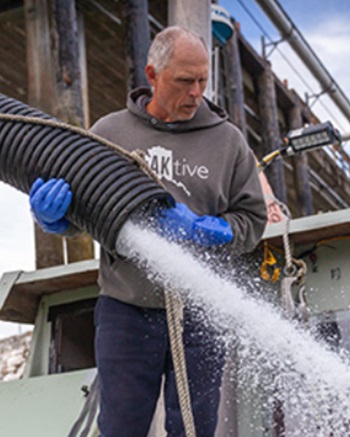 Nearly a dozen commercial fishing boats queued for gas and ice at the fuel dock on a foggy Saturday morning. The low tide set the pace slow enough for fishermen to talk to one another about the season even though they were eager to get underway. Boats bobbed up and down with names like Easy Street, Rustler, High Surf, Crown Haines, and Minnie A. Then the sun made its way through the morning clouds and the salty breeze carried the sounds of ice and fuel rolling through large plastic hoses hanging from the dock. It’s the third week since the season opener and fishermen like Matt Davis reflected on how the winds have shifted. more, >>CLICK TO READ<< 08:30
Nearly a dozen commercial fishing boats queued for gas and ice at the fuel dock on a foggy Saturday morning. The low tide set the pace slow enough for fishermen to talk to one another about the season even though they were eager to get underway. Boats bobbed up and down with names like Easy Street, Rustler, High Surf, Crown Haines, and Minnie A. Then the sun made its way through the morning clouds and the salty breeze carried the sounds of ice and fuel rolling through large plastic hoses hanging from the dock. It’s the third week since the season opener and fishermen like Matt Davis reflected on how the winds have shifted. more, >>CLICK TO READ<< 08:30
Ocean Wise pulls eco-labels from southeast Alaskan salmon
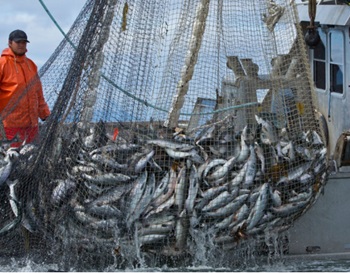 Canada’s largest sustainable seafood label has pulled its recommendation for southeast Alaskan salmon fisheries amid ongoing claims they are intercepting millions of B.C.-bound fish before they reach endangered southern resident killer whales. Ocean Wise quietly delisted the Alaskan fisheries last week, and on Monday, sent emails to restaurants and grocery chains that sell the fish. The decision, which targets chinook, chum, coho, pink and sockeye salmon in Alaska’s District 104, comes within weeks of the Vancouver-based eco-label adding a handful of B.C. salmon fisheries to its sustainable list. more, >>CLICK TO READ<< 11:47
Canada’s largest sustainable seafood label has pulled its recommendation for southeast Alaskan salmon fisheries amid ongoing claims they are intercepting millions of B.C.-bound fish before they reach endangered southern resident killer whales. Ocean Wise quietly delisted the Alaskan fisheries last week, and on Monday, sent emails to restaurants and grocery chains that sell the fish. The decision, which targets chinook, chum, coho, pink and sockeye salmon in Alaska’s District 104, comes within weeks of the Vancouver-based eco-label adding a handful of B.C. salmon fisheries to its sustainable list. more, >>CLICK TO READ<< 11:47
U.S. fisheries could be devastated by Supreme Court’s ending the Chevron doctrine
 Loper Bright Enterprises v. Raimondo the Supreme Court’s late June decision on regulatory agency authority, heralds the much-anticipated end of the 40-year-old Chevron doctrine, which required courts to defer to federal agencies when interpreting laws. No doubt, much will be written in the coming weeks about the impacts of Chevron’s demise on the administrative state. But, at its core, Loper Bright is a case about fisheries. What then are the implications of this decision for both the fishermen and the healthy fisheries of the United States? This case comes at a critical time for U.S. fisheries. Historically, the U.S. has seen many notable economically and culturally ruinous fisheries collapse — from the Atlantic cod collapse of the 1990s to the current collapse of Pacific salmon. The Magnuson-Stevens Act created the framework for the protection of U.S. fisheries and has been moderately successful since its enactment. more, >>CLICK TO READ<< 09:21
Loper Bright Enterprises v. Raimondo the Supreme Court’s late June decision on regulatory agency authority, heralds the much-anticipated end of the 40-year-old Chevron doctrine, which required courts to defer to federal agencies when interpreting laws. No doubt, much will be written in the coming weeks about the impacts of Chevron’s demise on the administrative state. But, at its core, Loper Bright is a case about fisheries. What then are the implications of this decision for both the fishermen and the healthy fisheries of the United States? This case comes at a critical time for U.S. fisheries. Historically, the U.S. has seen many notable economically and culturally ruinous fisheries collapse — from the Atlantic cod collapse of the 1990s to the current collapse of Pacific salmon. The Magnuson-Stevens Act created the framework for the protection of U.S. fisheries and has been moderately successful since its enactment. more, >>CLICK TO READ<< 09:21
Federal fishing monitoring program needs overhaul, GAO says
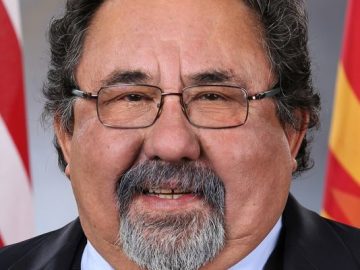 Only days after the Supreme Court dealt a blow to the federal government’s program placing human observers on commercial fishing boats, a federal watchdog said NOAA Fisheries should do a better job monitoring the industry. A report released Wednesday by the Government Accountability Office said NOAA Fisheries — also known as the National Marine Fisheries Service — has failed to execute its program as Congress intended under law. “NMFS’ efforts to track its performance in reducing and monitoring bycatch do not align with key elements of evidence-based policymaking related to performance management,” GAO said in the report, which was requested by Rep. Raúl Grijalva (D-Ariz.), the ranking member of the House Natural Resources Committee. more, >>CLICK TO READ<< 19:19
Only days after the Supreme Court dealt a blow to the federal government’s program placing human observers on commercial fishing boats, a federal watchdog said NOAA Fisheries should do a better job monitoring the industry. A report released Wednesday by the Government Accountability Office said NOAA Fisheries — also known as the National Marine Fisheries Service — has failed to execute its program as Congress intended under law. “NMFS’ efforts to track its performance in reducing and monitoring bycatch do not align with key elements of evidence-based policymaking related to performance management,” GAO said in the report, which was requested by Rep. Raúl Grijalva (D-Ariz.), the ranking member of the House Natural Resources Committee. more, >>CLICK TO READ<< 19:19
Horror on an Alaska fishing boat when a young crewman gets pulled into the sea
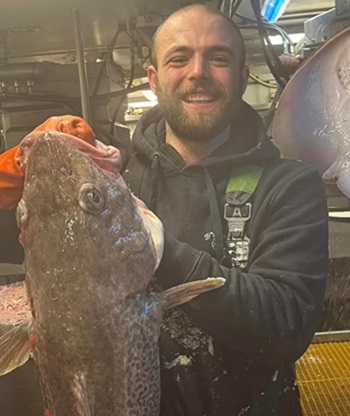 A 21-year-old fisherman died after his gear dragged him into the water in Southwest Alaska, officials said. Commercial fishing crewmember Corwin Wheeler fell from the boat in Kvichak Bay Friday, while fishing salmon. A mayday call reported him overboard at 12:31 pm, spurring a rescue operation. Officials said Wheeler first became tangled in his fishing gear, before being pulled overboard and into the water. Tributes have since poured in for the young angler, headed by his father. According to his social media, Corwin lived in Madison, and was born in Salem. Photos show him happily working the Bering Sea, as a salmon fisherman for Alaskan Leader Fisheries. Photos, more, >>CLICK TO READ<< 14:10
A 21-year-old fisherman died after his gear dragged him into the water in Southwest Alaska, officials said. Commercial fishing crewmember Corwin Wheeler fell from the boat in Kvichak Bay Friday, while fishing salmon. A mayday call reported him overboard at 12:31 pm, spurring a rescue operation. Officials said Wheeler first became tangled in his fishing gear, before being pulled overboard and into the water. Tributes have since poured in for the young angler, headed by his father. According to his social media, Corwin lived in Madison, and was born in Salem. Photos show him happily working the Bering Sea, as a salmon fisherman for Alaskan Leader Fisheries. Photos, more, >>CLICK TO READ<< 14:10
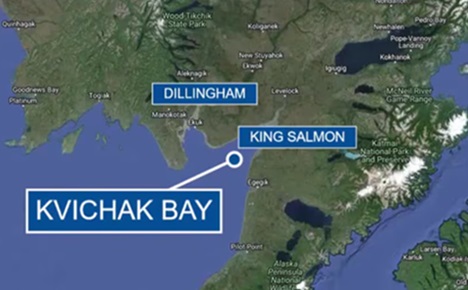
Crewmember on Bristol Bay fishing vessel dies following net entanglement
A commercial fishing crewmember in Western Alaska died Friday after he was swept up in fishing gear and taken into the water, according to the Alaska State Troopers. In a dispatch on Saturday, Troopers identified the victim as 21-year-old Corwin Wheeler of Wisconsin. Troopers began a rescue effort shortly after noon Friday upon receiving a mayday call from a fisherman in Kvichak Bay, a body of water near Naknek, part of the Bristol Bay Borough. more, >>CLICK TO READ<< 06:47
Electrical fire aboard the Hannah reduces Northline Seafood’s processing capacity
 A steady stream of frozen, whole fish emerges from a large spiral freezer. Each fish landing on a conveyor belt gets whisked away to the next stage in the production line. These frozen fish are some of the first sockeye salmon deliveries of the season from Bristol Bay fishing vessels to the Hannah — Northline Seafood’s brand-new floating freezer barge in the region. But on Sunday, June 30, an electrical fire under one of the Hannah’s freezers threw a wrench in that plan. According to Northline, the vessel’s team of marine firefighters were the first to respond to the incident and extinguish the fire. No one was injured. more, >>CLICK TO READ<< 08:45
A steady stream of frozen, whole fish emerges from a large spiral freezer. Each fish landing on a conveyor belt gets whisked away to the next stage in the production line. These frozen fish are some of the first sockeye salmon deliveries of the season from Bristol Bay fishing vessels to the Hannah — Northline Seafood’s brand-new floating freezer barge in the region. But on Sunday, June 30, an electrical fire under one of the Hannah’s freezers threw a wrench in that plan. According to Northline, the vessel’s team of marine firefighters were the first to respond to the incident and extinguish the fire. No one was injured. more, >>CLICK TO READ<< 08:45
Bristol Bay Fisheries Report: July 3, 2024
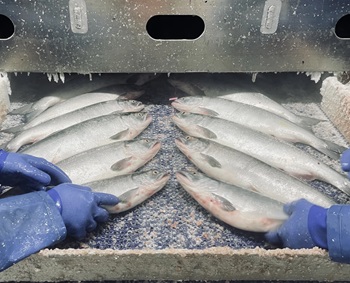 The baywide catch yesterday was 860,000, with over half of those fish coming from the Nushagak district. Egegik daily catch numbers more than doubled, with big average drift deliveries. Test fishery crews out at Port Moller report another day of increased catch indices, and say with those numbers, a larger and later run is more likely. An electrical fire damaged one of three spiral freezers aboard the Hannah on Sunday, June 30 2024. That’s Northline Seafood’s new floating processor, which is anchored in Bristol Bay’s Nushagak district this salmon season. The vessel is currently operating at a reduced capacity, although other processors are taking on some of Northline’s fleet. more, >>CLICK TO READ<< 10:14
The baywide catch yesterday was 860,000, with over half of those fish coming from the Nushagak district. Egegik daily catch numbers more than doubled, with big average drift deliveries. Test fishery crews out at Port Moller report another day of increased catch indices, and say with those numbers, a larger and later run is more likely. An electrical fire damaged one of three spiral freezers aboard the Hannah on Sunday, June 30 2024. That’s Northline Seafood’s new floating processor, which is anchored in Bristol Bay’s Nushagak district this salmon season. The vessel is currently operating at a reduced capacity, although other processors are taking on some of Northline’s fleet. more, >>CLICK TO READ<< 10:14
Copper River/PWS catch exceeds 1M salmon
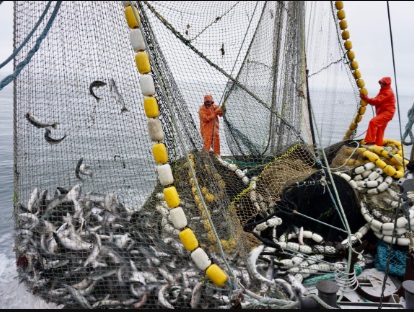 Commercial salmon harvests for the Copper River and the rest of Prince William Sound have now exceeded one million fish, including an estimated 959,946 sockeyes, in a season where retail prices continue to vary from $37.95 to $12.99 a pound. As more commercial fisheries opened statewide, Copper River, Bering River and Coghill district harvesters embarked June 24 on 36-hour commercial drift gillnet openers, and the Eshamy district began a 24-hour fishery. Commercial harvesters in the Unakwik, Montague and Southwestern districts were also fishing. As of late Monday, June 24, the salmon harvest in Prince William Sound stood at 973,000 sockeyes, 549,000 chum, 6,000 Chinook, and 1,000 pinks. Cook Inlet anglers had 42,000 sockeyes, and Bristol Bay districts — which are just getting started — had delivered 228,000 reds, bringing the Central Region total to 1.8 million fish, including 1.2 million sockeyes, 549,000 chum, 6,000 Chinooks, and 1,000 humpies. more, >>CLICK TO READ<< 19:12
Commercial salmon harvests for the Copper River and the rest of Prince William Sound have now exceeded one million fish, including an estimated 959,946 sockeyes, in a season where retail prices continue to vary from $37.95 to $12.99 a pound. As more commercial fisheries opened statewide, Copper River, Bering River and Coghill district harvesters embarked June 24 on 36-hour commercial drift gillnet openers, and the Eshamy district began a 24-hour fishery. Commercial harvesters in the Unakwik, Montague and Southwestern districts were also fishing. As of late Monday, June 24, the salmon harvest in Prince William Sound stood at 973,000 sockeyes, 549,000 chum, 6,000 Chinook, and 1,000 pinks. Cook Inlet anglers had 42,000 sockeyes, and Bristol Bay districts — which are just getting started — had delivered 228,000 reds, bringing the Central Region total to 1.8 million fish, including 1.2 million sockeyes, 549,000 chum, 6,000 Chinooks, and 1,000 humpies. more, >>CLICK TO READ<< 19:12
How the Supreme Court rescued my NJ fishing firm that bureaucrats almost sank
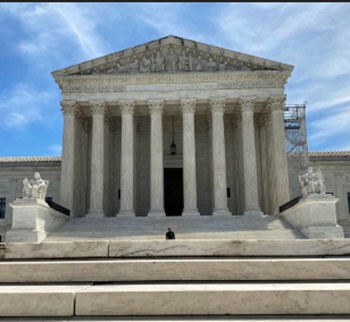 The Supreme Court just sided with my New Jersey-based, family-owned fishing business, and may have even saved it. That’s the reality of the court’s June 28 decision in a case called Loper Bright Enterprises v. Raimondo, which overturned the “Chevron doctrine” that gave unchecked power to federal bureaucrats. Yet the media reaction hasn’t focused on what the ruling means for regular people and job creators like me. The pundits say that Washington, DC, will descend into chaos because the justices stopped unelected and unaccountable bureaucrats from deciding for themselves what’s “reasonable” under federal law. But as I can attest, that power quickly leads to abuse. The Supreme Court has protected the American people from regulators run amok, and from a Congress that won’t do its job. I was one of the small business owners who sued the federal government in this case. By Wayne Reichle, more, >>CLICK TO READ<< 21:20
The Supreme Court just sided with my New Jersey-based, family-owned fishing business, and may have even saved it. That’s the reality of the court’s June 28 decision in a case called Loper Bright Enterprises v. Raimondo, which overturned the “Chevron doctrine” that gave unchecked power to federal bureaucrats. Yet the media reaction hasn’t focused on what the ruling means for regular people and job creators like me. The pundits say that Washington, DC, will descend into chaos because the justices stopped unelected and unaccountable bureaucrats from deciding for themselves what’s “reasonable” under federal law. But as I can attest, that power quickly leads to abuse. The Supreme Court has protected the American people from regulators run amok, and from a Congress that won’t do its job. I was one of the small business owners who sued the federal government in this case. By Wayne Reichle, more, >>CLICK TO READ<< 21:20

An Optimist’s view: Death of the Chevron Deference
My name is David Goethel. I am a 55 year plus commercial fisherman, research biologist and former fishery manager. As author of Endangered Species/Chronicles of A new England Fisherman I discuss these topics and a lawsuit I filed in 2015 with the legal group Cause of Action over the legal concept known as Chevron Deference. Most people believe Congress writes laws, the Executive Branch carries out those laws and the Judicial Branch interprets and clarifies whether aspects of those laws are Constitutional and correctly applied. It turns out under a doctrine called “Chevron Deference” the regulatory bureaucracy can deem a law unclear or ambiguous and create any regulation the agency decides it needs to carry out its bureaucratic function. Until this past Friday, the courts gave deference to the regulators as the “recognized experts” even though no proof is required and no test for ambiguity is applied. The Supreme Court overturned Chevron Friday saying they had “placed a tombstone on its grave”. Fishermen, including me, had sued saying that unelected regulators should not have this vast power over our lives. more, >>CLICK TO READ<< 20:18
Fishermen Who Were Forced to Pay $700 Per Day to Government-Mandated Observers on Their Boats Get Big News from SCOTUS
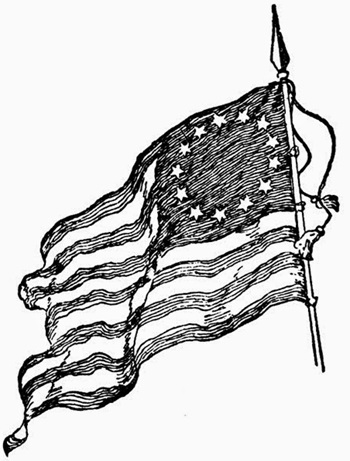 Members of the 18th-century British Parliament, unelected by American colonists, tried to take money from those colonists without their consent. Hence, the American Revolution ensued. On Friday, the U.S. Supreme Court overturned a 40-year-old ruling that had allowed unelected federal regulators, acting the part of the British Parliament, to commit such travesties of justice as requiring fishermen to pay for government-mandated regulators on their boats — a requirement that, according to CBS, could cost the fishermen more than $700 per day. The true magnitude of Friday’s ruling, however, involved far more than fishing boats. In fact, it struck at the heart of American progressivism by eviscerating the insidious claim that federal “experts” know best. In so doing, it took one small-but-crucial step towards dismantling the permanent federal state that actually governs in Washington, D.C. more, >>CLICK TO READ<< 11:18
Members of the 18th-century British Parliament, unelected by American colonists, tried to take money from those colonists without their consent. Hence, the American Revolution ensued. On Friday, the U.S. Supreme Court overturned a 40-year-old ruling that had allowed unelected federal regulators, acting the part of the British Parliament, to commit such travesties of justice as requiring fishermen to pay for government-mandated regulators on their boats — a requirement that, according to CBS, could cost the fishermen more than $700 per day. The true magnitude of Friday’s ruling, however, involved far more than fishing boats. In fact, it struck at the heart of American progressivism by eviscerating the insidious claim that federal “experts” know best. In so doing, it took one small-but-crucial step towards dismantling the permanent federal state that actually governs in Washington, D.C. more, >>CLICK TO READ<< 11:18
Opinion: The Fisheries Act is crucial to speed disaster relief to American fisheries
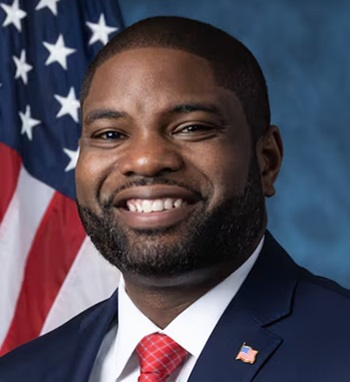 By the time NOAA and OMB finally approve and allocate disaster relief, small businesses and fisheries are already devastated and, in some cases, may have already been forced to close shop. This self-induced, slow-moving bureaucratic process is unacceptable. Overall, the Fishes Act expedites the deployment of federal fishery disaster relief by cutting unnecessary red tape and enacting a 30-day decision requirement for the Office of Management and Budget to either deny or approve a state’s spending plan. What we hope to do with this bill is to throw American fisheries and coastal communities a life raft to stay afloat post-disaster. U.S. fisheries support millions of jobs and bring in billions of dollars to the broader U.S. economy each year. more, >>CLICK TO READ<< 10:17
By the time NOAA and OMB finally approve and allocate disaster relief, small businesses and fisheries are already devastated and, in some cases, may have already been forced to close shop. This self-induced, slow-moving bureaucratic process is unacceptable. Overall, the Fishes Act expedites the deployment of federal fishery disaster relief by cutting unnecessary red tape and enacting a 30-day decision requirement for the Office of Management and Budget to either deny or approve a state’s spending plan. What we hope to do with this bill is to throw American fisheries and coastal communities a life raft to stay afloat post-disaster. U.S. fisheries support millions of jobs and bring in billions of dollars to the broader U.S. economy each year. more, >>CLICK TO READ<< 10:17
How a seagoing mentorship program trains ‘greenhorns’ and changes lives
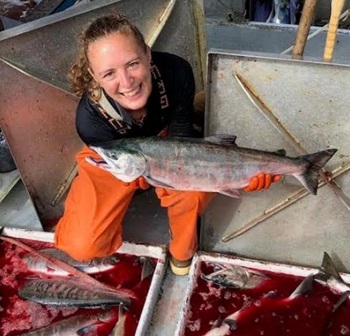 As a student at Vermont’s Middlebury College, Lea LeGardeur loved being on the water. Which proved an asset for LeGardeur, who, after teaching geography at Middlebury, decided to commercial fish in Alaska. LeGardeur’s break came when she discovered the Alaska Longline Fishermen’s Association, or ALFA, based in the small fishing town of Sitka, Alaska. The organization had an extensive record of fighting foreign fishing, trawling and depletion of resources. ALFA had recently secured a grant to fund its Crew Training Program, or CTP. The program was the brainchild of Karl Jordan, who suggested the concept to his father, Eric, shortly after Eric’s wife, Sarah, announced her decision to retire from fishing. Jordan père went on to propose the concept to Linda Behnken, the executive director at ALFA. Photos, Video, more, >>CLICK TO READ<< 07:50
As a student at Vermont’s Middlebury College, Lea LeGardeur loved being on the water. Which proved an asset for LeGardeur, who, after teaching geography at Middlebury, decided to commercial fish in Alaska. LeGardeur’s break came when she discovered the Alaska Longline Fishermen’s Association, or ALFA, based in the small fishing town of Sitka, Alaska. The organization had an extensive record of fighting foreign fishing, trawling and depletion of resources. ALFA had recently secured a grant to fund its Crew Training Program, or CTP. The program was the brainchild of Karl Jordan, who suggested the concept to his father, Eric, shortly after Eric’s wife, Sarah, announced her decision to retire from fishing. Jordan père went on to propose the concept to Linda Behnken, the executive director at ALFA. Photos, Video, more, >>CLICK TO READ<< 07:50
Neil Gorsuch Cheers Supreme Court Placing ‘Tombstone’ on 40-Year Precedent
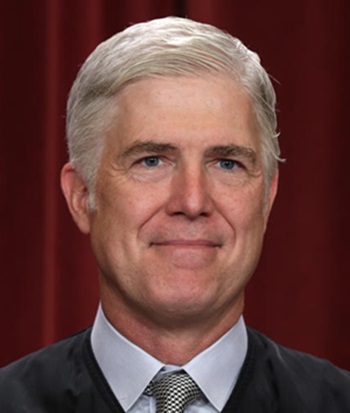 In Friday’s 6-3 ruling in Loper Bright Enterprises v. Raimondo, the justices wiped out 40 years of administrative law precedent in a move that will restrain federal agency powers. The court’s decision overturned the Chevron deference established in the 1984 case Chevron v. Natural Resources Defense Council. The majority, led by Chief Justice John Roberts and joined by the court’s other conservative justices, held that “courts may not defer to an agency interpretation of the law simply because a statute is ambiguous,” overturning Chevon deference. The court’s three liberal justices dissented. The majority, led by Chief Justice John Roberts and joined by the court’s other conservative justices, held that “courts may not defer to an agency interpretation of the law simply because a statute is ambiguous,” overturning Chevon deference. The court’s three liberal justices dissented. In Gorsuch’s concurring opinion, he wrote: “Today, the Court places a tombstone on Chevron no one can miss. In doing so, the Court returns judges to interpretive rules that have guided federal courts since the Nation’s founding.” more, >>CLICK TO READ<< 15:49
In Friday’s 6-3 ruling in Loper Bright Enterprises v. Raimondo, the justices wiped out 40 years of administrative law precedent in a move that will restrain federal agency powers. The court’s decision overturned the Chevron deference established in the 1984 case Chevron v. Natural Resources Defense Council. The majority, led by Chief Justice John Roberts and joined by the court’s other conservative justices, held that “courts may not defer to an agency interpretation of the law simply because a statute is ambiguous,” overturning Chevon deference. The court’s three liberal justices dissented. The majority, led by Chief Justice John Roberts and joined by the court’s other conservative justices, held that “courts may not defer to an agency interpretation of the law simply because a statute is ambiguous,” overturning Chevon deference. The court’s three liberal justices dissented. In Gorsuch’s concurring opinion, he wrote: “Today, the Court places a tombstone on Chevron no one can miss. In doing so, the Court returns judges to interpretive rules that have guided federal courts since the Nation’s founding.” more, >>CLICK TO READ<< 15:49







